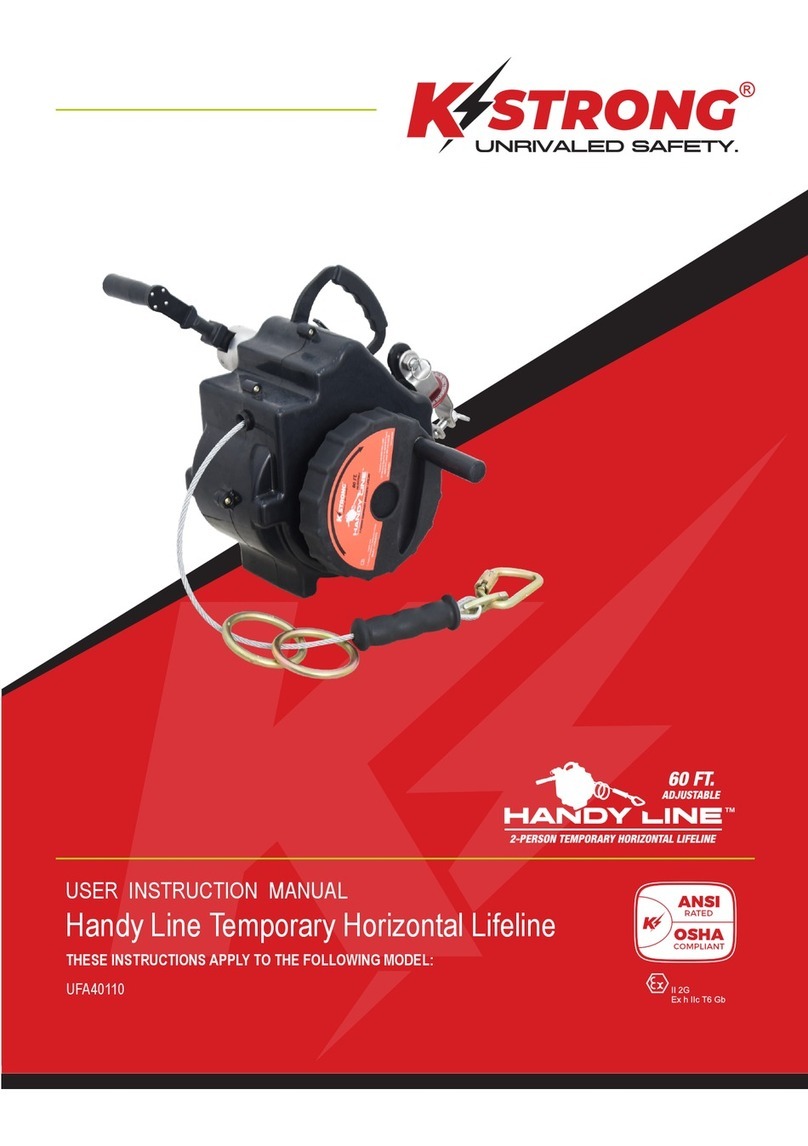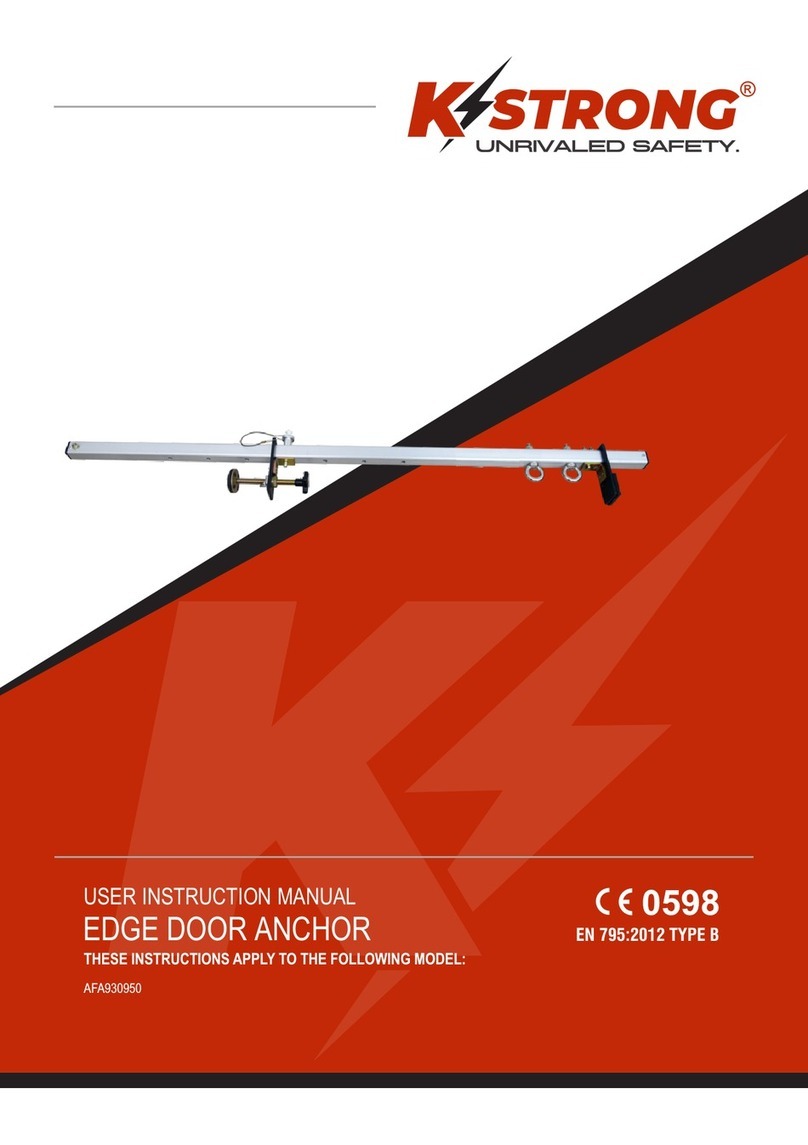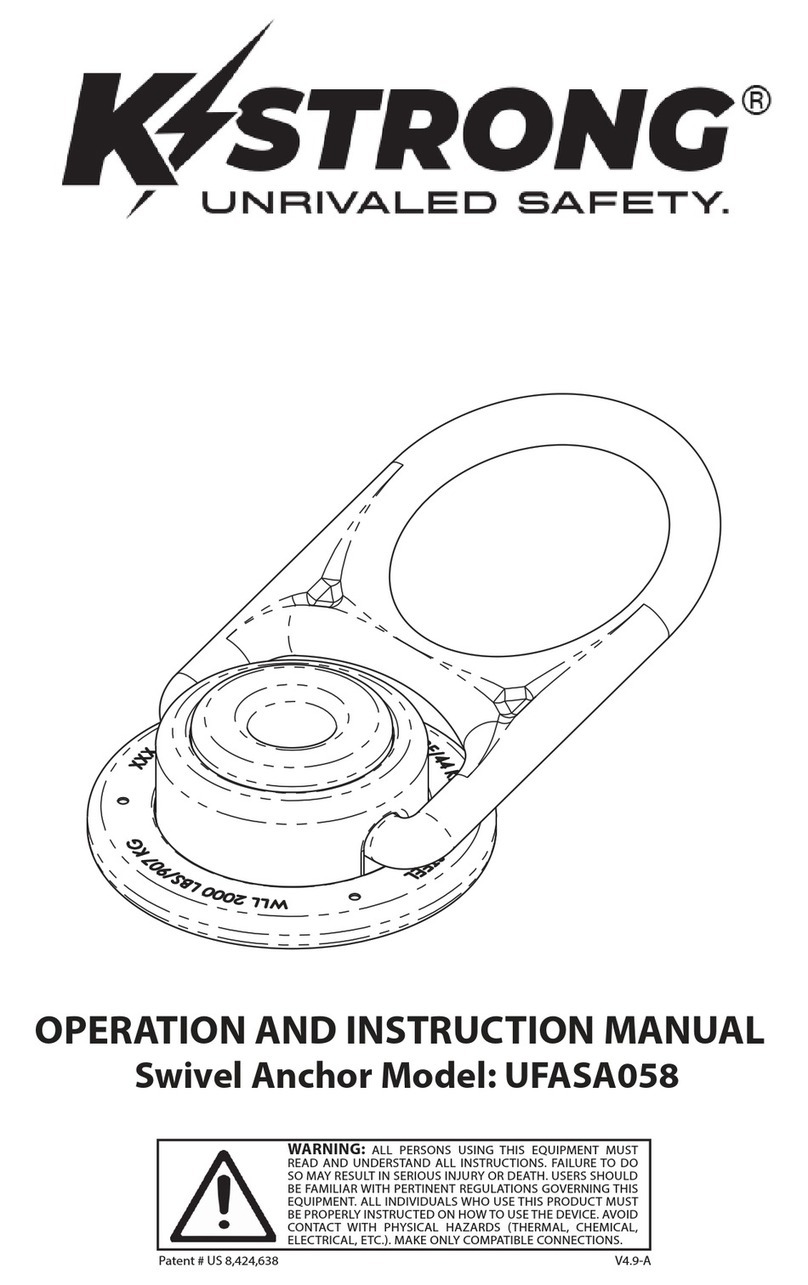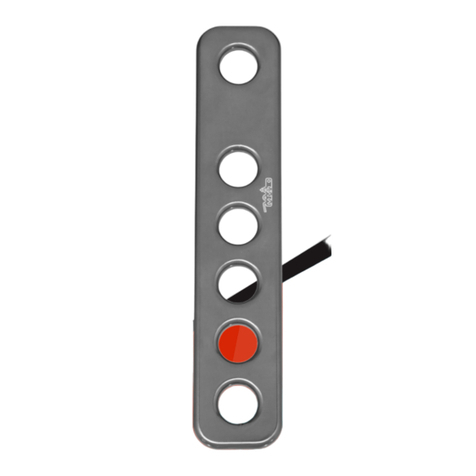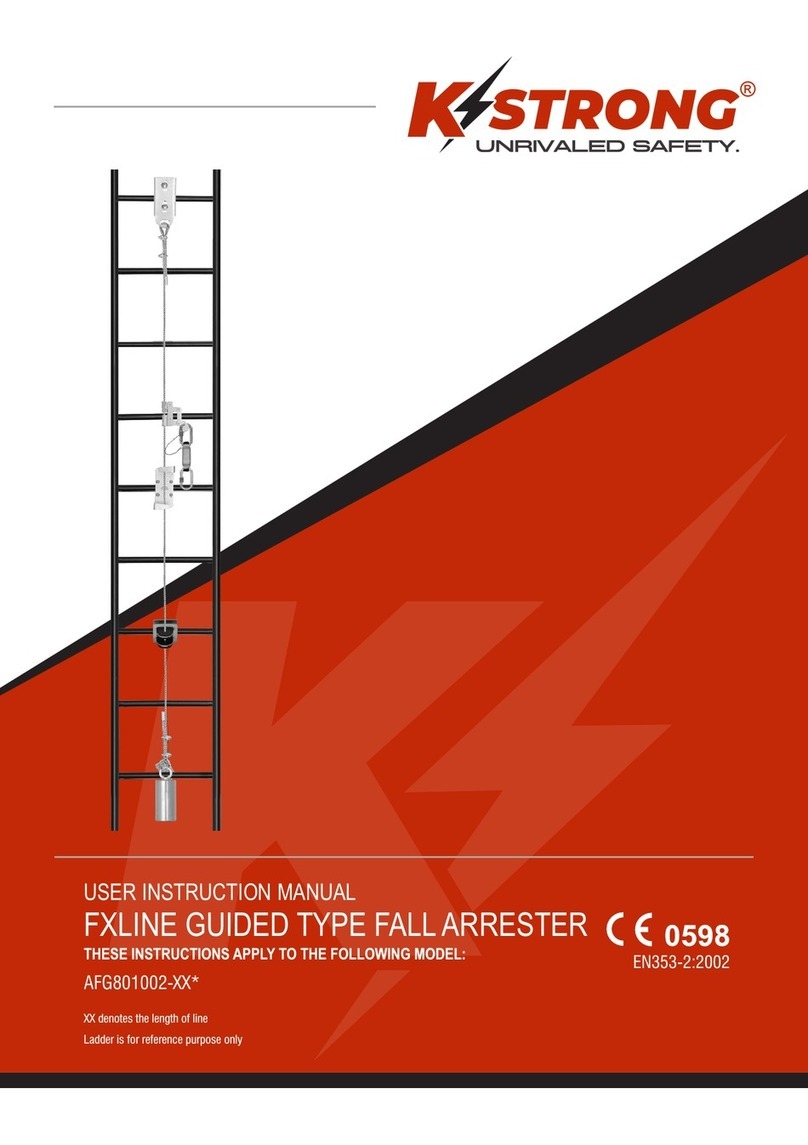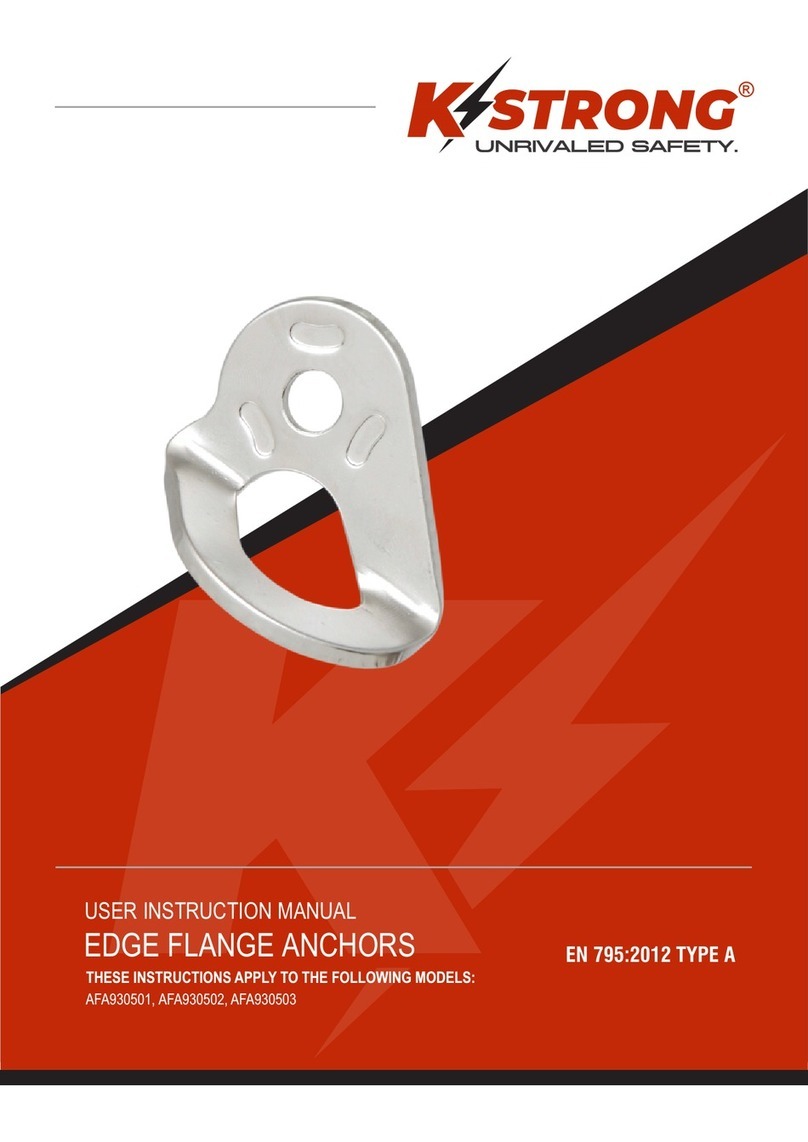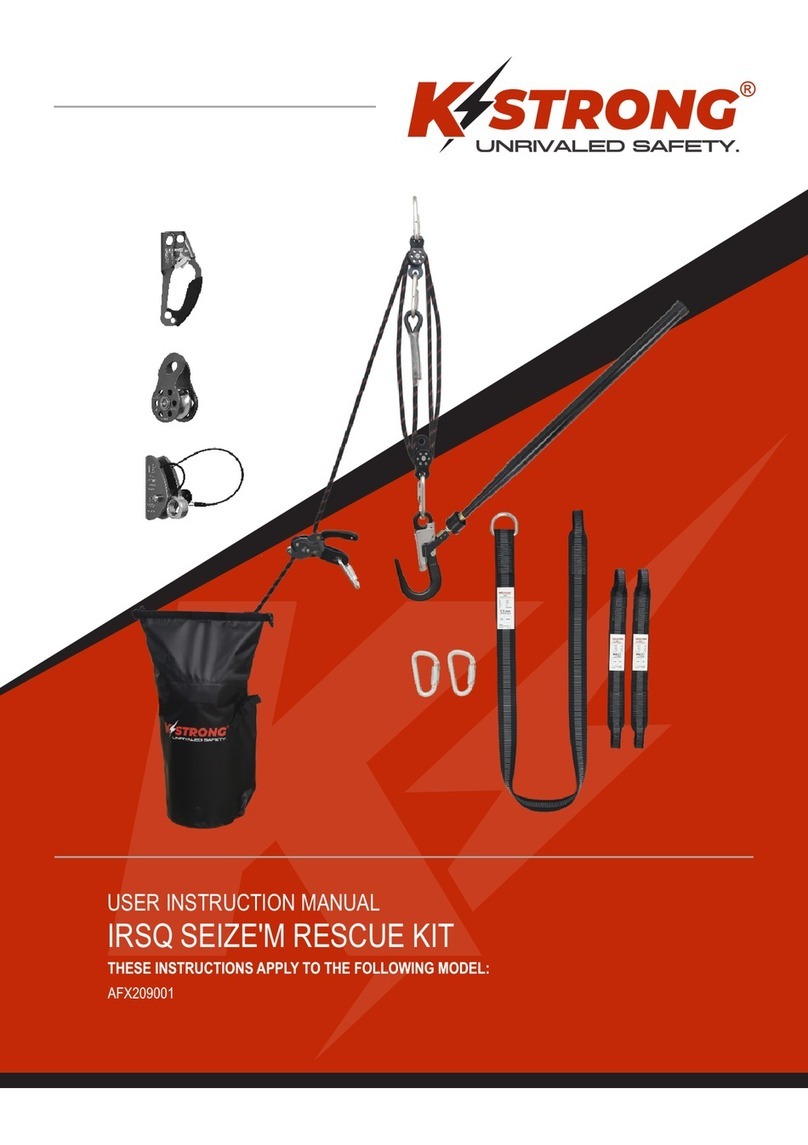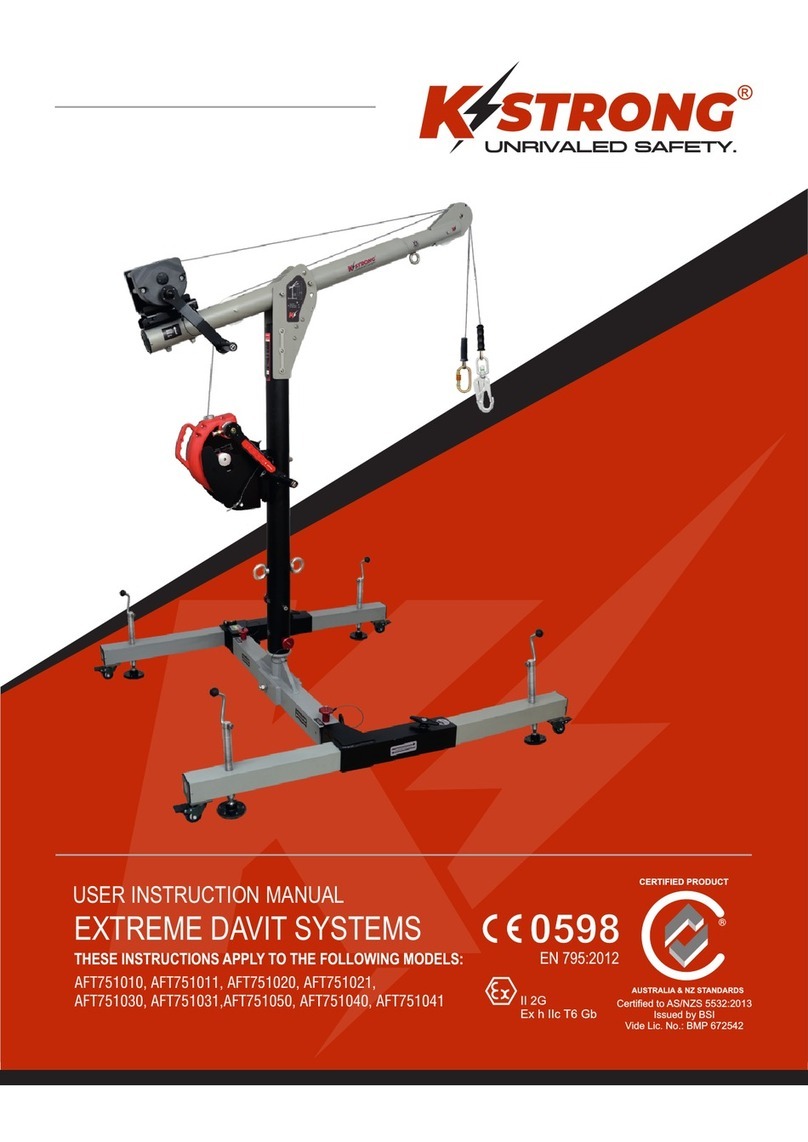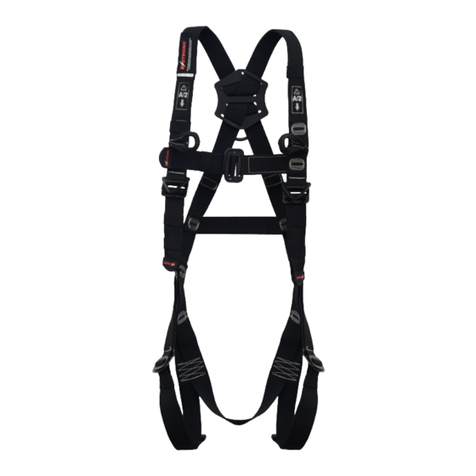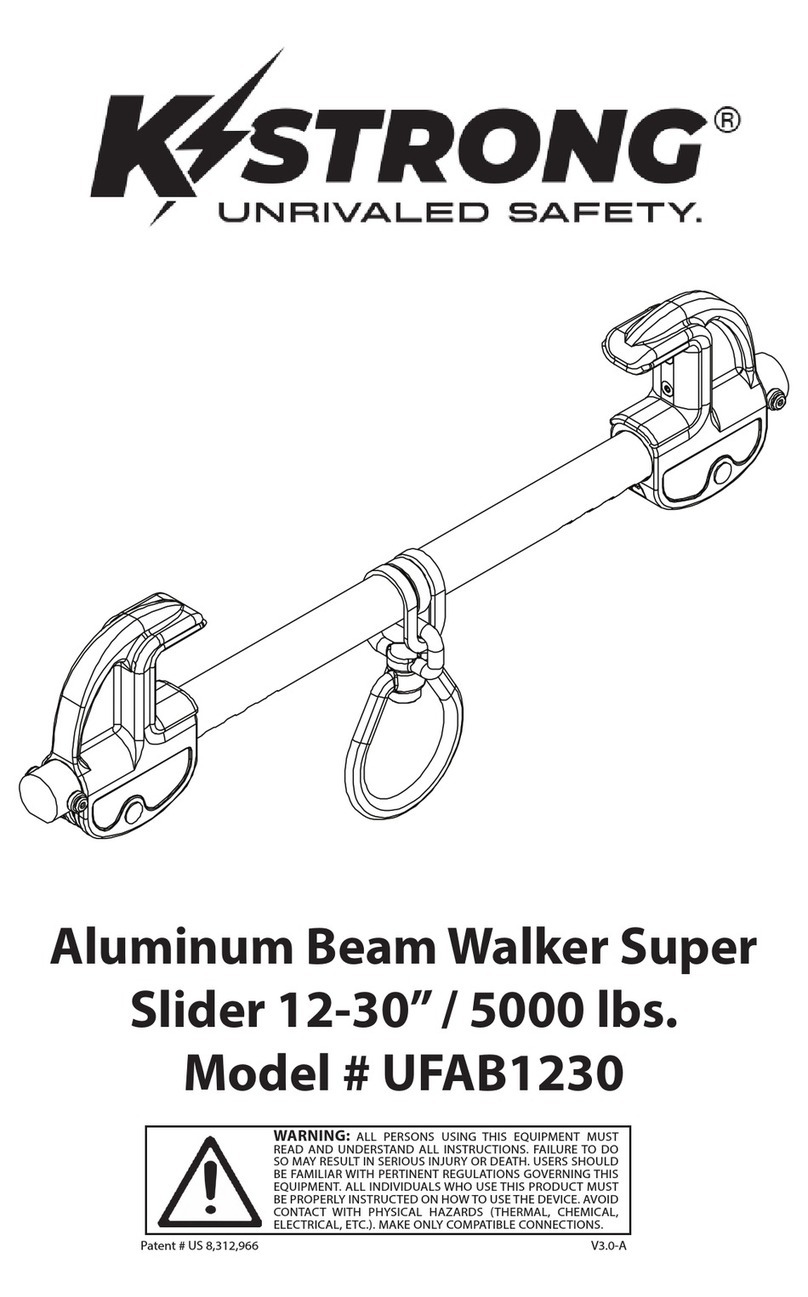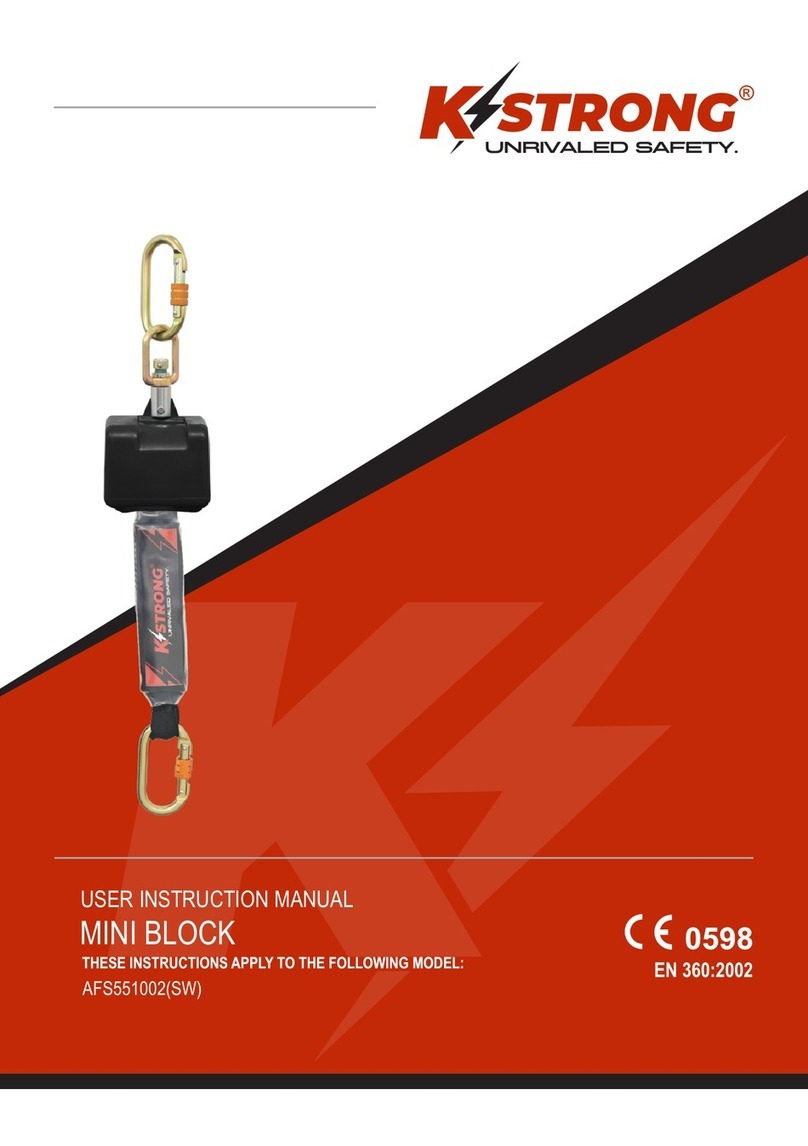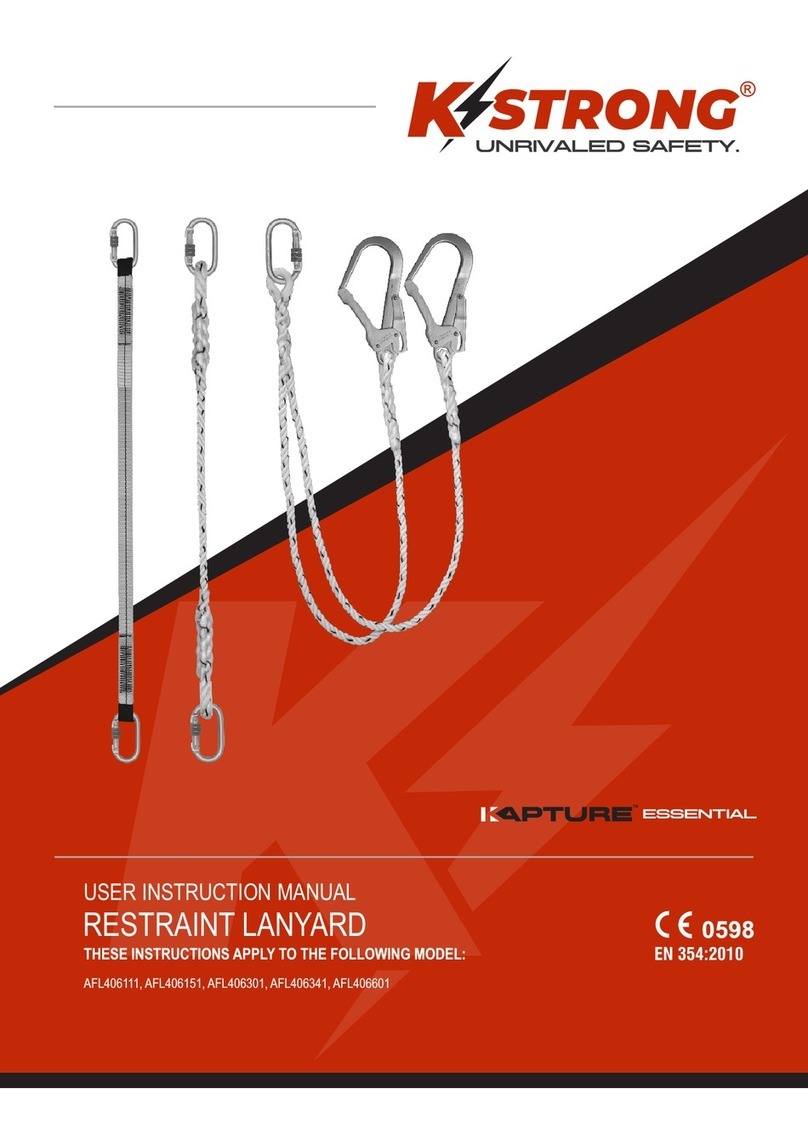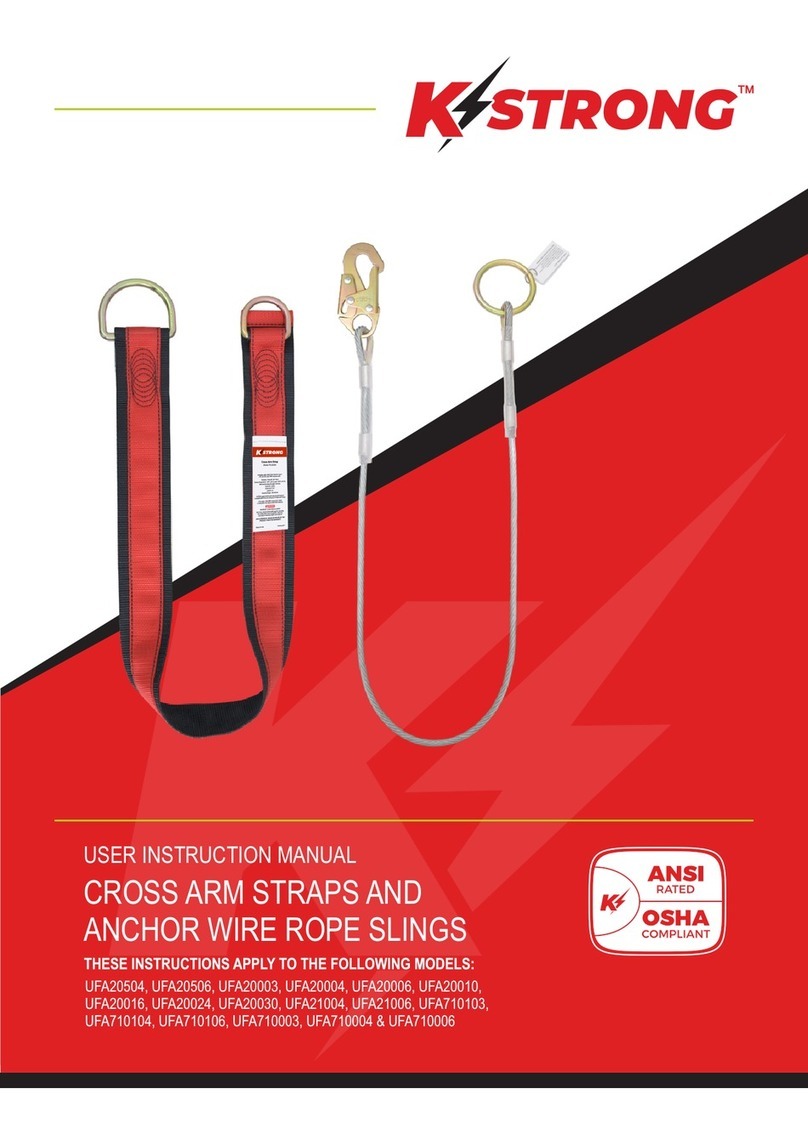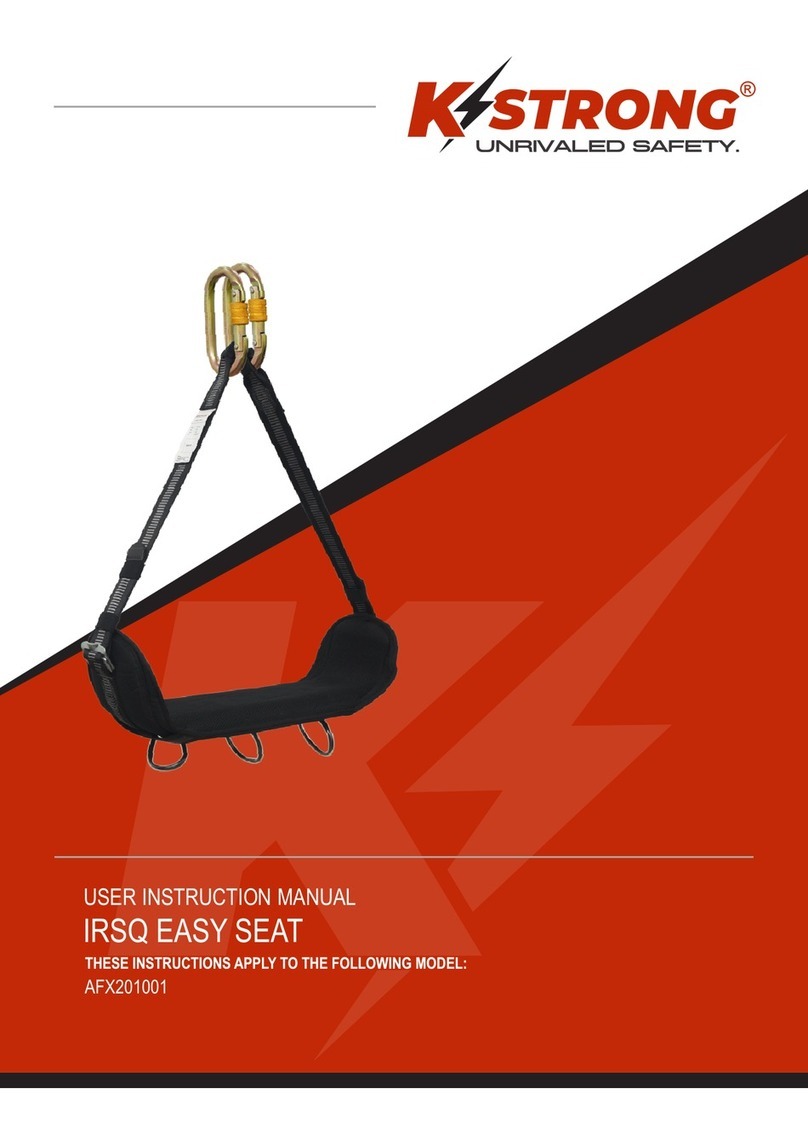
DOs AND DON'Ts
ŸBefore each use, make sure you find no signs of cuts, wear, discoloration, deformation, corrosion, etc. When in doubt, the
equipment should be replaced.
MAINTENANCE AND CLEANING
ŸTool Lanyards that have been used to arrest a falling tool should be taken out of service.
Ÿ Proper care is important for maintaining the safety and longevity of the tool lanyards. Before and after each use, remove all dirt,
corrosives, and other contaminants from the KStrong Tool Lanyards.
DISPOSAL
ŸInspect the wear and tear present on the tool lanyard.
Ÿ The product should be kept and transported in its original packaging or in airtight packaging.
INSPECTION:
ŸA visual inspection is essential before using any KStrong equipment.
ŸDo not use this equipment beyond its weight limit.
ŸAlways check the connection to the tool before each use.
Ÿ Do not wrap lanyards around sharp or rough edges. Lanyards should not be used with blades, knives, etc.
Ÿ If the KStrong Tool Lanyards cannot be cleaned with plain water, use mild soap and water, then rinse and wipe dry, or allow to dry in
an environment absent of excessive heat and light.
STORAGE AND TRANSPORTATION
Ÿ When not in use, store equipment where it will not be affected by heat, light, excessive moisture, chemicals, or other corrosive
elements.
Steps to dispose tool lanyards when deemed unfit for use:
ŸSpread the tool lanyard on a table / flat surface.
ŸIf any wear and tear is observed, dispose the lanyard using a sharp scissors;
first cut the Textile and dismantle the tool lanyard.
NOTE
Do not attempt to disassemble the unit or make repairs to the equipment. Send the
equipment back to the manufacturer, or persons or entities authorized in writing by the
manufacturer to make repairs to the equipment.
û Never tie knots in a tool lanyard.
û For tools weighing more than 5lbs. (2.26kg), do not tether
such tools to the human body unless specifically authorized
per the product instructions.
û Tool and lanyards are for tool use only. They are not for
human support, nor are they intended to be part of a human
fall protection system.
û Do not wrap lanyards around sharp or rough edges.
û Never connect multiple lanyards together.
û Do not use this product if it interferes with the tool's safe
working condition, or the anchoring location—including
personal fall protection.
û Lanyards must not be used as hoisting taglines or used to
statically suspend tools and equipment.
û· If you are not able to find a suitable connection point on the
tool, do not connect the Tether. Ask your supervisor for help.
û Never cinch the cord or karabiner around the wrist.
û Never modify or alter tool lanyards.
û Never wrap the lanyard back onto itself, unless specifically
instructed.
û Never modify a tool or primary anchoring location.
ü Use extra precaution around moving machinery or parts,
electrical hazards, chemical hazards or other apparent
hazards.
ü Always ensure the karabiners are closed and locked
properly.
ü The user must weigh the tool or tools to be tethered to ensure
they do not exceed the maximum safe working capacity of the
tool lanyard or any part of your tethering system. User should
also refer to the label or user manual for information on
maximum capacity information.
ü Always inspect tool lanyards and all parts of your tethering
system prior to, and after each use (refer to inspection steps).
ü Always wear appropriate personal protective equipment
when installing or using tethering systems.
ü Always ensure the hook & loop closures fasten properly.
After every use or if the tool lanyard has
arrested a tool fall, the tool lanyard should
be checked by a competent person. If
deemed not fit for use, it should be
immediately removed from use.
WARNING
When using Retrofit Tool or Anchor Attachments, the user
must ensure that the Maximum Tether Length identified on
the attachments is compatible with the identified tether length
indicated on the tool lanyard label .Failure in doing so may
not give optimum utilization of the connection made
5

